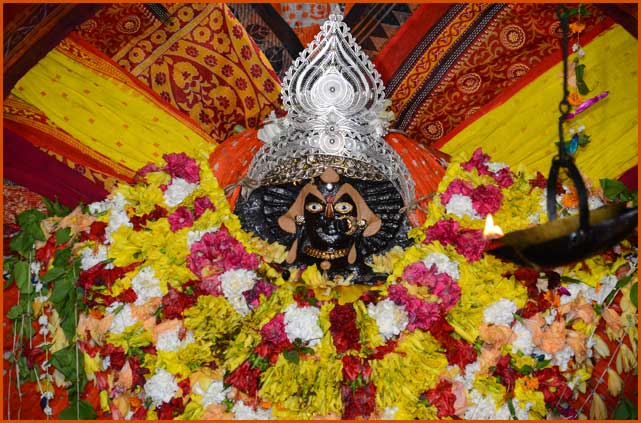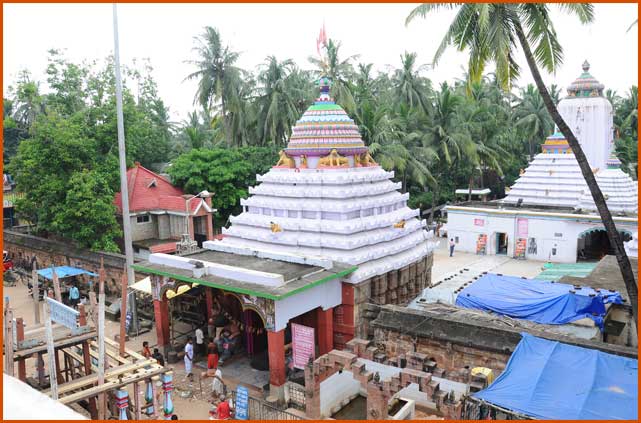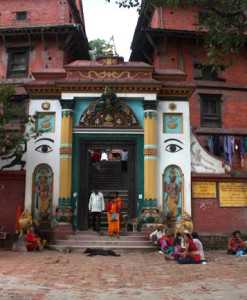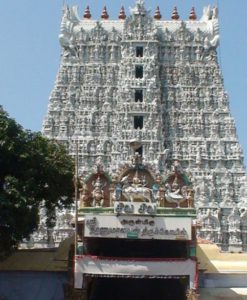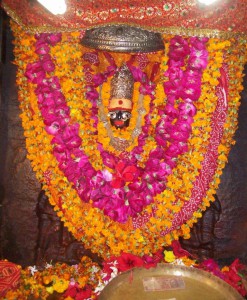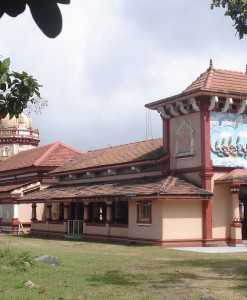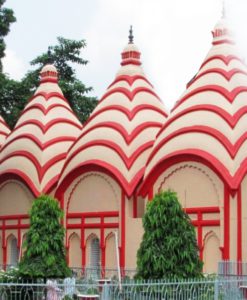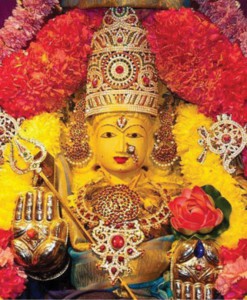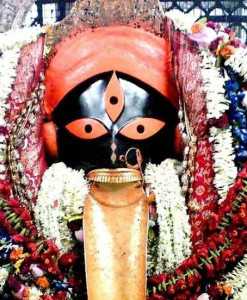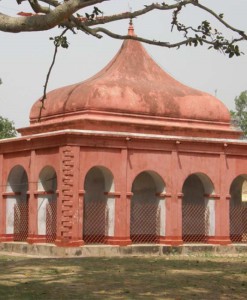No products in the cart.
Maa Biraja Temple is an historic Hindu temples located in Jajpur (about 125 kilometres (78 mi) north of Bhubaneswar), Odisha, India. Biraja or Viraja Temple is one of the important Maha Shakthi Peetas. Here the main idol Durga Devi is worshipped as Girija (Viraja) and Lord Shiva as Jagannath. Sati’s navel fell here. Adi Sankara describes the goddess as Girija in his Ashtadasha shakti peetha stuti. Here Maa Biraja Devi is worshiped as Trishakti Mahakali, Mahalakshmi and Mahasaraswati.
The Maa Biraja Temple covers a large area, and has several shrines to Shiva and other deities. According to the Skanda Purana it cleanses pilgrims, and it is called the Viraja or the Biraja kshetra. Jajpur is believed to have about one crore of Shiva lingams.
Maa Biraja Temple,Jajpur, Odisha
According to Brahmanda Purana, once Brahma (the creator of the Universe) performed a Yajna (great sacrifice) on the river Baitrani. Parvati emerged from the Garhapatya fire as a result of Brahma’s invocation and advised Brahma to name her as Biraja. Brahma prayed to Parvati and asked her to stay at the Kshetra as the divine consort of Siva. Parvati agreed and created Nine Durgas, Sixty Four Yoginis, Eight Chandikas and asked them to remain in the Kshetra permanently. Due to the presence of these deities, this land was well known as Shakti Peetha. At Biraja Temple, Lord Vishnu is in Varaha incarnation.
Jajati Keshari, a ruler of Kesari dynasty built the Biraja temple in Jajati Nagar (now Jajpur) in 13th century during the Kalinga time. The deity, Maa Biraja which stands 70 ft from the floor is said to be worshipped from 5th Century. The temple is named after the King Jajati Keshari. According to the legend, the place is also known as ‘Gadakhestra’, as Bhima’s Gada (mace) was lying in this holy place. In front of the temple stand two lions above elephant. This is indicative of the greatness of Keshari dynasty (Symbol of Lion) than Gajapati dynasty (Symbol of elephant) in Orissa.
A great Yagna (sacrificial oblation) was performed over the body of Gayasur, (the great demon devotee of Lord Vishnu) by the Lords Shiva, Brahma and Vishnu to kill the demon. Gayasur’s feet were in Pada Gaya (a place in Pithapuram, Andhra Pradesh), nabhi (Navel) in Biraja Kshetra or today’s Jajpur, known as Nabhi Gaya and head at Shiro Gaya. The exact spot is in a well that lies inside the Biraja temple just close to Maa Biraja.
The morning seva starts of this Maa Biraja Temple at 4.00 am with Mukha Marjan (Face wash), followed by Danta Kastha. Here the deity’s teeth are brushed with Bilwa stick. Then the deity is readied for the royal bath by applying Gandhamala, turmeric and sandal paste, sarbaushadhi and other scented oils. The deity is given Panchamruta snan (liquid mixture of milk, curd, ghee, sugar and honey) followed by Shudodhaka snan using water from sacred Rivers like Ganga and the Baitrani. This is followed by Mantropachar wherein Purusasukta and Sri sukta are recited to the goddess. Mantropachar is followed by Dhoop, Deep and Naiveidya, after which the deity is open for dharshan to all her devotees. (Sahan Mela). The morning seva ends at 4.30 am.
The midday Seva consists of Dhoop (burning of incense sticks) and Deep,(lighting of lamps). Sweetened rice and other items are offered as Naivedya to the deity. This is followed by Arati (burning camphor), Puspanjali (offering flowers and Bilwa leaves to Maa Biraja), Arghya Samarpan (Offering of water) and Mantra pushpa (recital of sacred mantras). The midday rituals come to a close (Pahuda) at 1.00 pm
The afternoon seva starts at 3.00 pm with mukha soudha (cleaning of the mouth). This is followed by offering curd mixed with sugar and then the deity is opened for darshan to all her devotees. (Sahan Mela)
In the evening Arati is performed followed by Pushpanjali (offering flowers to goddess).Then sweets are offered as Samanya Naivedya.
The night seva starts at 10 pm with nitya (normal) upachar puja, and boiled rice, dal etc. is offered as Naivedya. Arati, Pushpanjali and Arghya Samarpan are offered after which the day comes to an end. This is also called as night close (Ratri Pahuda).
The primary ritual in the Maa Biraja Temple is Sharadiya Durga Puja, which begins on the night of Krishna Paksha Ashtami. This falls before Mahalaya, and ends on Ashwin Shukla Paksha Navami. The puja, known as Shodasha Dinatatmika Puja, lasts for 16 days. The ratha (chariot festival) is known as Simhadhwaja, and its flag bears a lion. During the lunar transition from Shukla Ashtami to Shukla Navami an animal sacrifice, Bali Daanam, is performed. Navratri is celebrated as Aparajita Puja.
Other festivals include Nakshatra, Shravana, Prathamastami, Pana Sankranti, Raja Parva and Navanna. Devi is worshiped daily in accordance with Tantra and Agama traditions as Mahishasuramardini by the Brahmins of Jajpur.
From time immemorial, Goddess Biraja is considered as the presiding Deity of Odisha. There are various rituals conducted by three categories of Brahmins namely Kar, Pani, Panigrahi throughout the day at the temple. The daily worship of Devi is done according to Tantra and Agama Shastras.
Bana Durga mantra is recited to Goddess Biraja throughout the year except on Triveni Amavasya (New moon day of Magha masa). Goddess Biraja is worshipped with Gayatri Mantra on her Janmamohtsav.
Nearest Bus Stand: Jajpur Bus stand which is 2 km distance from temple
Nearest Railway Station: Keonjhar Road Railway station
Nearest Airports: Bhubaneswar

